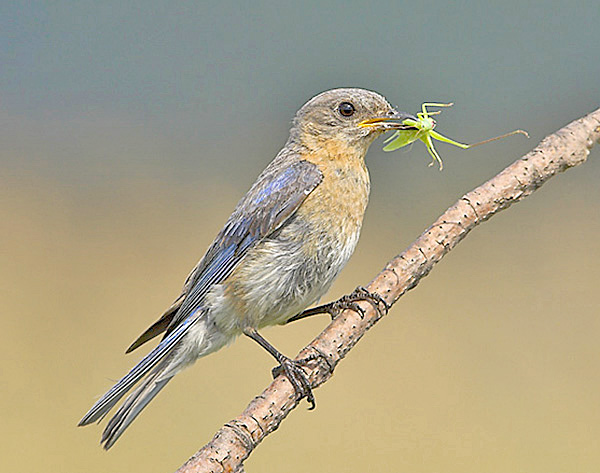
In North America, no other bird looks like a bluebird. These small, lovely thrushes decorate open habitats with shades of turquoise, sapphire, and peach!
Attracting bluebirds to your garden is not too difficult either! Do the right things, and you can watch beautiful bluebirds while they nest, forage, and call near your home.
While they probably won’t visit urbanized areas, bluebirds can be attracted to rural homesteads and places with big, open lawns.
Read on to see how to attract bluebirds to your place!
On this page
How To Attract Bluebirds To Your Garden?
Mealworm Feeder
Unlike so many other birds that come to backyard feeders, bluebirds are insectivores. They won’t eat seeds or grain, nor peanuts or birdseed for chickadees and goldfinches.
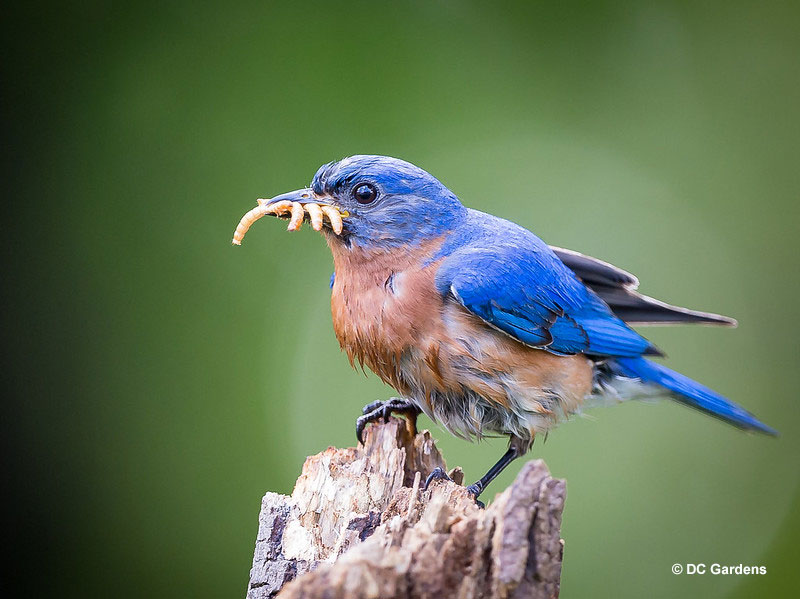
Although you won’t see bluebirds enjoying seeds, you can still feed them. You just have to use a different type of food. Since they are insectivores, dried mealworms are one of the best things to attract bluebirds. Most pet stores sell them, especially ones that deal in reptiles, and they often sell dry and live mealworms.
See more: Best Bluebird Feeders
Bluebirds enjoy both types of mealworms and will eat them from plates and other types of platform feeders.
Offer Them Bits of Fruit
The other main part of the bluebird diet is fruit. When they aren’t feeding on insects and other small arthropods (they love grasshoppers, crickets, and other small insects), these small thrushes eat fruit and berries( such as elderberry, black cherry, and hackberry). They love to eat berries and other wild fruits, especially during the winter months.
Related: 8 reasons why birds aren’t coming to your feeders
However, they can also come to platform feeders that have raisins, blueberries, and other types of fruit. Chopped apples might also work. If the bluebirds don’t show up at first, keep trying. It might take a while for a bluebird flock to find this new food source and use it.
However, once they do find it, if they feed, they’ll come back!
Plant Fruiting Trees and Bushes
It’s good to maintain bird feeders, but the best backyards for birds are ones that also have lots of native plants. Planting bushes and trees that bluebirds feed on is probably the best way to attract them to the yard.
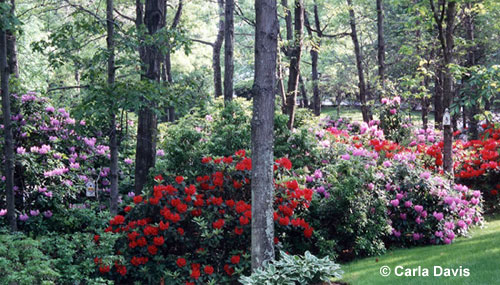
If plants like elderberries, sumac, blueberries, and chokecherries are present in winter, bluebirds could even visit yards in urban areas. Other good fruiting plant species for bluebirds are Wild American Holly, Tupelo, Black Cherries, Dogwood, Hackberries, Bittersweet Vine, and Eastern Red Cedar.
Related: Plants That Attract Birds
To bring in bluebirds, it’s best to plant them in a corner of the yard. For the best results, work with a bird-friendly landscaper.
Open Meadows
As with any bird species, providing them with the right habitat is another essential for attracting bluebirds. Always remember that no bluebird species likes dense forest. They can live in semi-open areas. However, they mostly need big, open meadows, and grasslands with some trees and perches.
All three bluebird species of the US – Eastern Bluebirds, Western Bluebirds, and Mountain Bluebirds love open habitats.
Huge, open lawns with scattered trees are ideal, and bluebirds can also do well in apple and peach orchards. If you let too much woody vegetation grow, although other birds will like it, bluebirds will forage somewhere else. The small thrushes prefer open habitats with short grass because this is where they find their insect prey, especially during breeding season.
Leave Dead Trees Standing
Another way to improve your local habitat for bluebirds is by leaving a dead tree or two. For a bird-friendly yard, leaving a couple of snags is always a good thing to do!
Dead trees can be a real bonus because not only does this overlooked habitat highlight help bluebirds, snags also provide homes for bats, screech-owls, and other animals.
Of course, you can’t leave trees that might fall on the house, but dead trees left in an open field can work wonders. Woodpeckers make holes in them that bluebirds might eventually use for nesting. Bluebirds also like to perch on dead snags (along with many other birds).
Install A Few Perches
Bluebirds can be picky birds. They need more than a semi-open spot or an area with a nice, big meadow. In addition to open grassy habitats with plenty of bugs and other small creatures to feed on, they also want those places to have a few scattered perches.
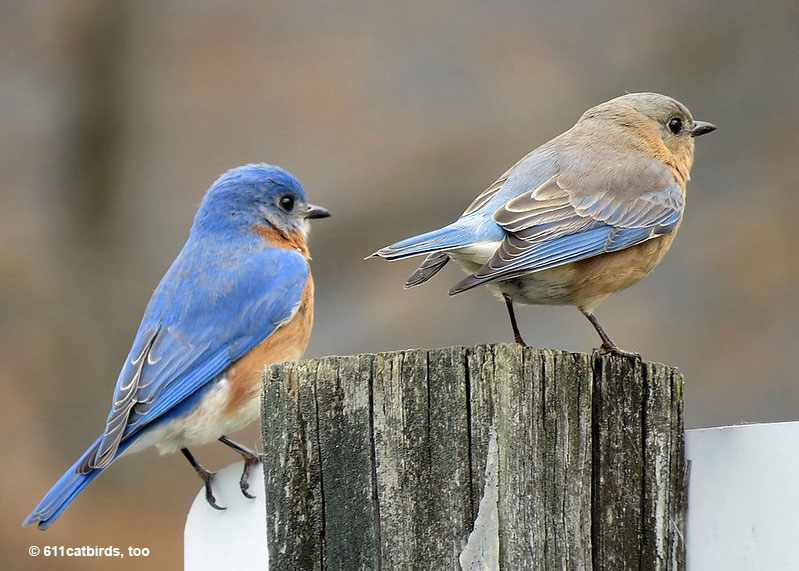
Pair of Eastern Bluebirds
Perches in open areas help bluebirds watch for prey as well as threats. You can please and attract the birds by simply installing a few, three-foot tall posts. Bluebirds also love fence posts. They can also use wire perches on fences as well as small, isolated trees, snags, and other spots where they have a good view.
Install A Bluebird Box or Two
One of the easiest ways to attract bluebirds is also one of the most popular. Bluebirds need open meadows, and they’ll eat mealworms, but what they like the most is a good place to build a nest. In the case of bluebirds, that translates to a small nest cavity.
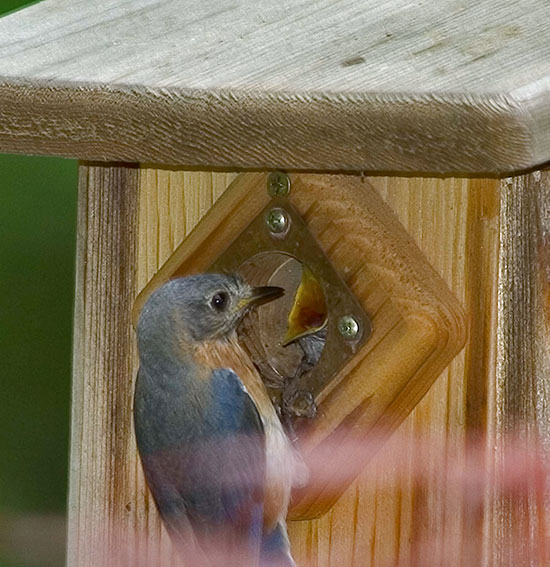
Bluebirds do not build nests in a bush or out in the open. As cavity nesters, they absolutely require cavities, but fortunately, the nesting hole can be in a dead tree or a nest box. You can make your own nesting box (make sure to use correct dimensions) or buy a ready-made birdhouse!
Make sure the box is high enough to discourage cats, the right-sized entrance hole, and you might become neighbors with bluebirds!
Related: Where to place your bluebird box
Keep Cats Indoors
Believe it or not, cats are one of the bluebird’s biggest threats. Whether feral or domesticated, small felines are naturally adapted to and wonderfully skilled at hunting small birds. If a bluebird sees a cat or two, it might even leave the area. The bird knows a threat when it sees it and can figure that the risk is too high.
Bluebirds are especially susceptible to being caught by cats because they feed on and near the ground.
It doesn’t take long for a cat to observe a bluebird, get an idea of where and how it feeds, and plan its attack.
At some point, it could be successful, especially with fledgling bluebirds.
Install a Birdbath
Our final suggestion to attract bluebirds is installing a birdbath. Many birds love to bathe, especially on hot summer days. Bluebirds are no exception, and love the cool, shallow water of a birdbath.
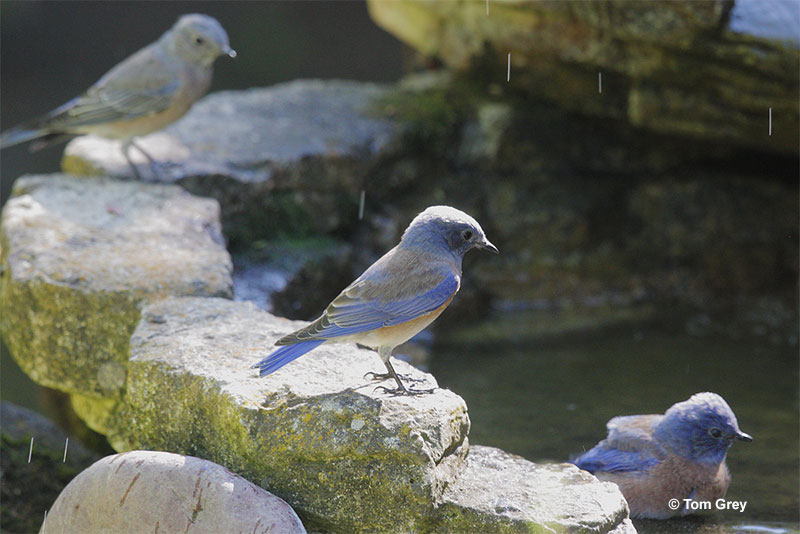
Make sure to place it in a spot safe from cats and where bluebirds can flee to cover if they feel threatened. You should also have your camera handy; birdbaths are fantastic situations for bird photography! In addition to bluebirds, you could also get memorable shots of warblers, goldfinches, and other small birds.
Use a birdbath big enough for small bluebird flocks, and a heated one during the winter months.
What To Avoid
There are certain things that attract bluebirds to backyards. However, we also have to be aware of what they don’t like as well as situations that could harm them. The most important thing to keep in mind is to always remember that bluebirds need open habitats.
Related: Why is bluebirding important?
If you convert open meadows to brushy habitats and dense forests, they’ll go somewhere else.
We also have to be sure that bluebirds have plenty to eat and are safe from predators. To give them a good, healthy habitat, never use pesticides on your lawn, and never use plastic grass. Both situations eliminate bluebird food and might end up hurting birds.
How we feed bluebirds is also important. A platform feeder in the middle of a field will be too far from cover. Instead, put it at least 15 feet from vegetation so birds can quickly fly to shelter.
To deter cats, feeders should also be on top of a pole, at least four feet above the ground, and use a baffle. The baffle will also discourage squirrels and other small mammals.
On a final note, to keep House Sparrows and other unwanted guests from bluebird houses, use nest boxes with 1.5-inch diameter holes and no perches.
Attracting Bluebirds – Frequently Asked Questions
What is the best food to attract bluebirds?
The best food to attract bluebirds is mealworms and small fruits.
Where is the best place to put a bluebird feeder?
The best place to put a bluebird feeder is on a four-foot high pole with a baffle, at least 15 feet near bushes and trees. Do not put it near windows or glass doors!
What is the best birdhouse to attract bluebirds?
The best birdhouse to attract bluebirds is one that lacks perches and has a 1.5-inch diameter hole.
What flowers are good for bluebirds?
Flowers good for bluebirds include Flowering Dogwood, American Cranberry, Holly, and Beautyberry.
How to attract bluebirds in the winter?
To make your garden more bluebird-friendly for winter, make sure you have different kinds of shrubs and berries. Bluebirds won’t say no to a reliable food source!

